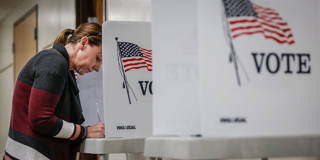Technology is increasingly being proposed as a way to eliminate voting obstacles for the poor and increase turnout. But the efficacy of voting technology in boosting participation remains largely unproven; worse, implementing it on a large scale could end up undermining public policy.
NEW YORK – According to an unpublished “kitchen table survey,” conducted before last November’s presidential election in the United States, approximately 95% of the predominantly Hispanic members of one of America’s largest domestic unions preferred the Democratic candidate Hillary Clinton to her Republican opponent Donald Trump. Yet less than 3% of that union’s members actually planned to vote. The reason came down to economics.

NEW YORK – According to an unpublished “kitchen table survey,” conducted before last November’s presidential election in the United States, approximately 95% of the predominantly Hispanic members of one of America’s largest domestic unions preferred the Democratic candidate Hillary Clinton to her Republican opponent Donald Trump. Yet less than 3% of that union’s members actually planned to vote. The reason came down to economics.